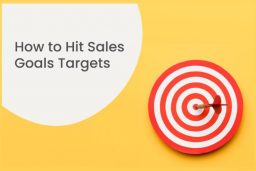“The single most important sales metric for sales managers is the velocity of conversion through the funnel stages.”
– Jaime Muirhead, VP of Sales, RingLead
Speed is essential in the B2B world. This makes sales velocity an important metric to measure. However, most businesses ignore it. In this article, we’ll cover what sales velocity is, why you should care, and why it’s often overlooked.
What is sales velocity?
Sales velocity is the measurement of how swiftly deals get closed. A higher number is better. It is calculated with the following metrics:
- Number of leads
- Conversion rate
- Average deal size
- Average number of days to close
Use the formula below in order to calculate your sales velocity:

The formula is simple enough but that doesn’t make the concept any less important.
Why is sales velocity important?
Wasting time is detrimental to the process. Thanks to sales velocity, you can measure how efficient you are. This makes it one of the most important metrics out there. A high sales velocity means your business is generating profits faster. Low velocity means something is wrong along the sales pipeline. You should find out what it is and fix it.
Why is sales velocity generally overlooked?
Sales velocity is easy to calculate, but it’s difficult to improve. You need to get into the details and seep through lots of data before you can get any answers. Of course, this process doesn’t need to be that complicated – there are big data companies (you can link to your product here) who handle this specific task on a daily basis.
Why is sales velocity more important than other metrics?
Sales velocity allows you to increase your profits by changing a few habits in the sales cycle. It’s a matter of gathering the right data and fine-tuning the process. Very few metrics can make the same claim without being full of it.
To put things into perspective, increasing your conversion rate by 10% and decreasing the average number of days to close by 10% gives you a 21% increase in your sales velocity. This is changing only two metrics in the sales pipeline. There are more options explored in this article on KiteDesk.
Conclusion
- Sales Velocity encompasses multiple metrics in a simple easy to follow number.
- Tracking Sales Velocity, allows for easier communication across your sales team since its so much easier for busy sales reps to follow a single number than 5 different metrics that constitute Sales Velocity.
- It allows for easy comparison of sales team performance across months, quarters and years.
- Most importantly, its discourages myopic focus on any single sales metric like revenue, opportunity conversion rate or size of deal.
For a sales organization to be successful it needs to fire on “all cylinders” and tracking Sales Velocity as a metrics ensures exactly that.
For more information about MoData offerings click here



